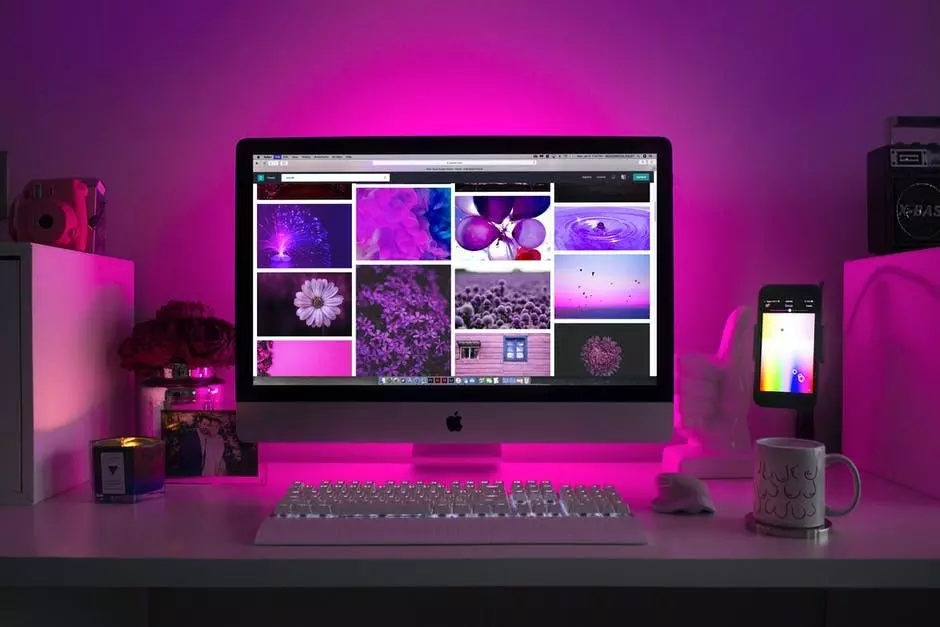Comments
- No comments found

A good first impression is everything.
This is especially true for websites as well because you've only got a few seconds to convince a user to peruse your website.

Most users will only read 20% of the content on your page. If your website is too busy and without a precise message or call to action, people will bounce.
Lack of traffic or high bounce rate on your website could be a result of poor website design. There are a few things that can help you improve your website and web presence but if done incorrectly could impair your Google ranking and conversation rate.
That's why it's common practice to delegate this responsibility to a web design agency. They use the best web design practices to bring the goal and vision for your website to life. Here are some web design tips on how to improve your website:
Most web users have a very short attention span. Hence, users get discouraged and move on easily, when you have a website with a slow load time. It's something you've probably mindlessly on other people's websites. To not have this happen to your website should ideally load within three secs. Here are some ways you could declutter your website and decrease your bounce rate:
Optimize Images
Reduce plugins
Clear Up Framework and Themes
Use a CDN (content delivery network)
Use SSI (server side Include)
Condense your website's code (i.e HTML, CSS, and JavaScript)
Optimize the Homepage
Choose a great Hosting Platform
Responsiveness of a site is the degree of flexibility of that website on whatever device it's been accessed on. This is especially important because an increasing amount of users now access the web through mobile phones and tabs rather than laptops and computers.
So, make sure your website is responsive. That means your site should contain the contents and information but a different display; that changes automatically depending on the user's screen size. Every experienced web design agency can explain how much of an advantage this can be for you. For instance, by using responsive design you can help create a seamless experience for users, which will keep them engaged with your site.
Moreover, Google has made it so that sites that are mobile-friendly get priority when searched on mobile devices. The more reason to know what your site looks like on any device. Also, you can test if your site is responsive with Google's mobile-friendly test.

With great navigation, your website appears more organized and has a less complicated interface. They say "patience is a virtue" but this virtue is lost in the digital world. When prospects visit your site, they want all the information they can get as fast as possible.
A difficult interface results in an unsatisfactory user experience and this increases your site's bounce rate. Here are some standard practices worth emulating:
Images when overused could be overwhelming to people. But, top-quality images used strategically could tell a story about who you are and what you stand for. That's why it's much better to use actual images of yourself, your team, and your space.
The alternative of using stock images is also fine in terms of quality but you're at the risk of appearing non-unique, generic, and less trustworthy. Most users may subconsciously attach the negative emotions of their previous encounters with such images to your site. The last thing you want is to be guilty by such fickle associations.

Whitespace is also known as negative space (it doesn't need to be white) refers to empty spaces around elements on a page that lack content or visual items.
Whitespace could be used as an important design element to segment a page and increase readability. Research shows that using white space in the left and right margins, and in between paragraphs, boosts reader comprehension by 20 percent.
Many people are wary of whitespace because it does take a lot of space that should take up useful content. The challenge is prioritizing what's important to share and the general legibility of your site. Whitespace could also be used to highlight specific details like a call to action or a value proposition.
The call to action is very important when it comes to conversion rate. It's the use of actionable words and emotion suggestive colors to guide your users into that next step of conversion. Examples of actionable words to use are download, get started, sign up now, etc.
When considering the color of your CTA button a good understanding of the psychology of color will be very helpful. For example, a predominantly blue or light blue site will work well with a contrasting yellow or orange CTA button.
Endeavor not to use too many CTA on the same page, as it confuses users and discourages them from visiting your website the next time around. You should have one big attention-grabbing CTA per page.
An increasing amount of links on your site resulting in 404 errors can be frustrating to a user.
While redirects may be beneficial to you for whatever reasons (like ads), avoid using them wherever possible. Users find them annoying and consider them time wasters. And if there's one consistent theme you've learned so far, it is that web users do not have free time to spare.
404s and redirects subconsciously create an impression in the user's mind that things don't work properly on your site. And down goes your site's credibility as they bounce right out to a competitor's site. Check If your links are working very regularly.

Whatever business you are conducting online, your website will be very instrumental to its success. That's exactly why you should make sure the design of your website is top-notch. Great web design can revolutionize your website, reduce bounce rate, and increase your conversion rate. Following some of these tips can help your website's user experience.
Leave your comments
Post comment as a guest